-
main-collection-product-grid
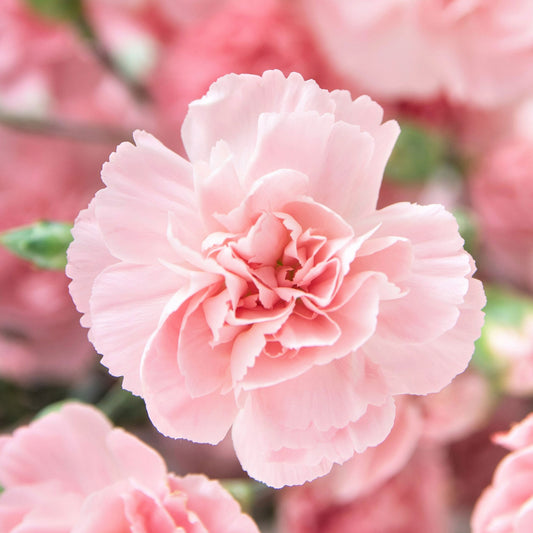
Carnation Seeds - La France
A blush-colored heirloom with the sweetest fragrance, perfect for your ValentineCarnation Seeds - La France
A blush-colored heirloom with the sweetest fragrance, perfect for your ValentineRegular price As Low As $5.99Regular priceUnit price per -
main-collection-product-grid
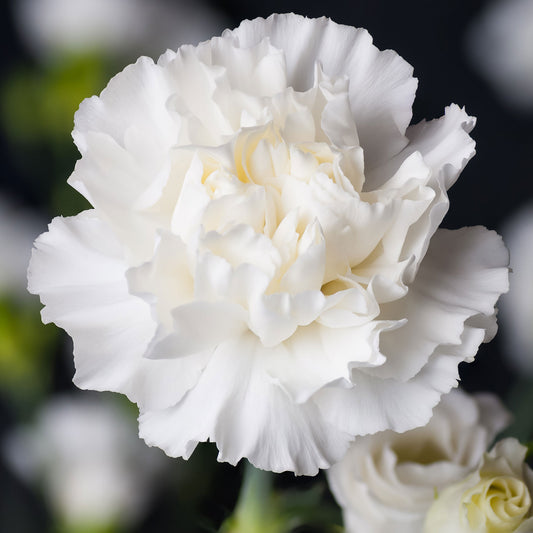
Carnation Seeds - Jeanne Dionis
White as snow and as breathtaking as the first frosty morningCarnation Seeds - Jeanne Dionis
White as snow and as breathtaking as the first frosty morningRegular price As Low As $5.99Regular priceUnit price per -
main-collection-product-grid
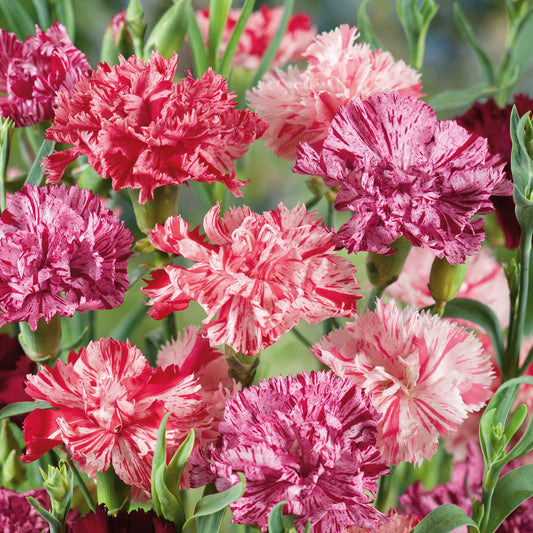
Carnation Seeds - Picotee Mix
Speckled blooms that belong in an old-fashioned candy storeCarnation Seeds - Picotee Mix
Speckled blooms that belong in an old-fashioned candy storeRegular price As Low As $5.99Regular priceUnit price per -
main-collection-product-grid
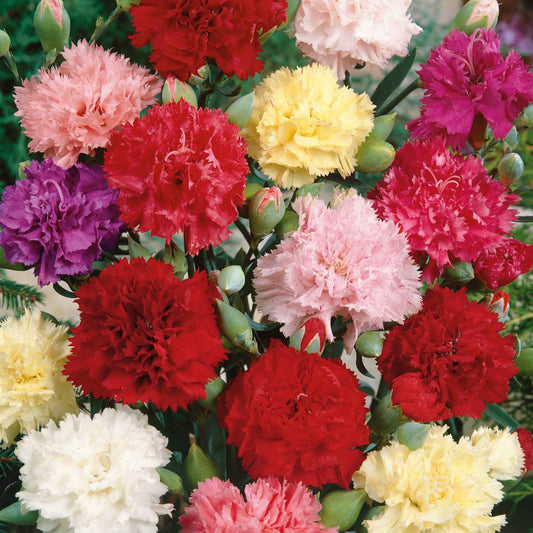
Carnation Seeds - Chabaud Mix
This rainbow mix of ruffled flowers have a clove-like scent are actually edibleCarnation Seeds - Chabaud Mix
This rainbow mix of ruffled flowers have a clove-like scent are actually edibleRegular price As Low As $5.99Regular priceUnit price per -
main-collection-product-grid
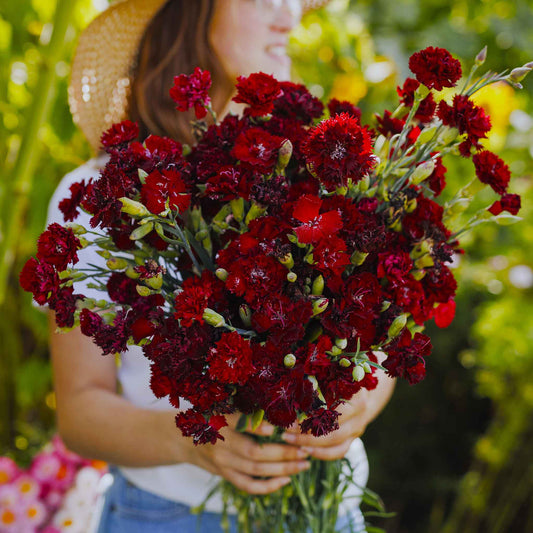
Carnation Seeds - Grenadin King of Blacks
These wine-colored blooms are the darkest of all carnationsCarnation Seeds - Grenadin King of Blacks
These wine-colored blooms are the darkest of all carnationsRegular price As Low As $5.99Regular priceUnit price per -
main-collection-product-grid
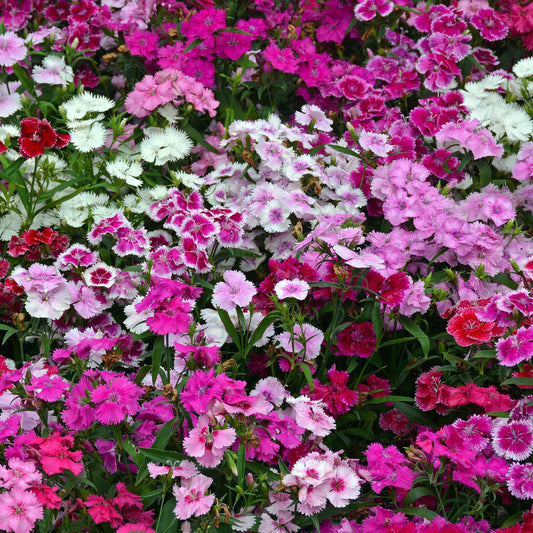
Sweet William Seeds - Indian Carpet Dwarf Single Mix
Short-stemmed, bicolor blooms make a gorgeous groundcoverSweet William Seeds - Indian Carpet Dwarf Single Mix
Short-stemmed, bicolor blooms make a gorgeous groundcoverRegular price As Low As $4.99Regular priceUnit price per -
main-collection-product-grid
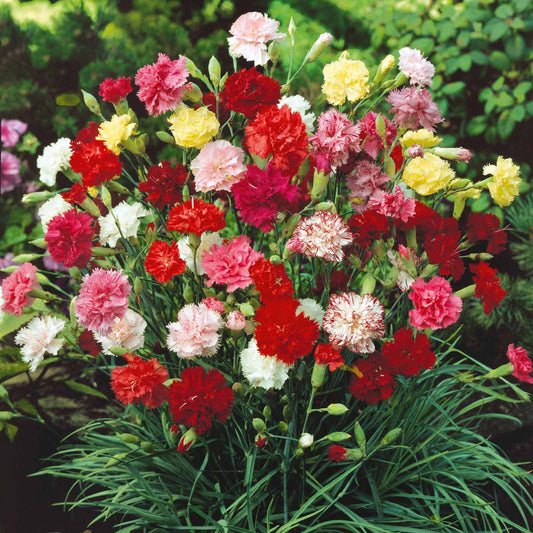
Carnation Seeds - Grenadin Double Mix
Perfect for an edible flower garden, these fully flowered blooms open in pairsCarnation Seeds - Grenadin Double Mix
Perfect for an edible flower garden, these fully flowered blooms open in pairsRegular price As Low As $5.49Regular priceUnit price per -
main-collection-product-grid
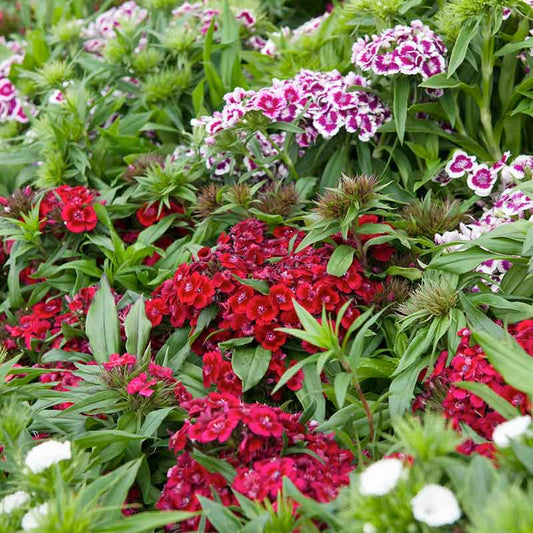
Sweet William Seeds - Tall Single Mix
Simple beauty and enchanting fragrance describe these classic bloomsSweet William Seeds - Tall Single Mix
Simple beauty and enchanting fragrance describe these classic bloomsRegular price As Low As $4.99Regular priceUnit price per -
main-collection-product-grid
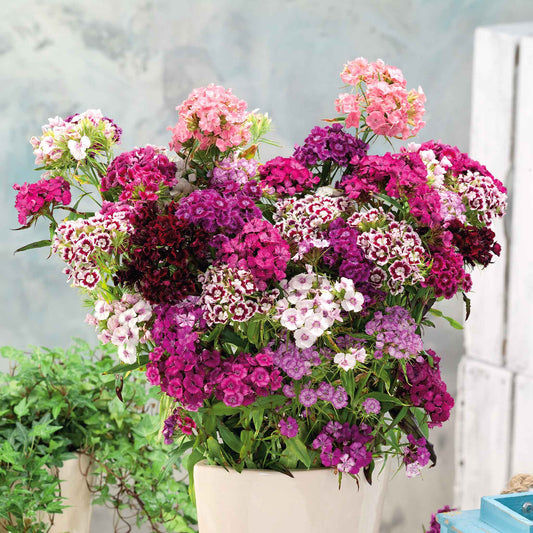
Sweet William Seeds - Tall Double Mix
Double the blooms and twice as tallSweet William Seeds - Tall Double Mix
Double the blooms and twice as tallRegular price As Low As $4.99Regular priceUnit price per -
main-collection-product-grid
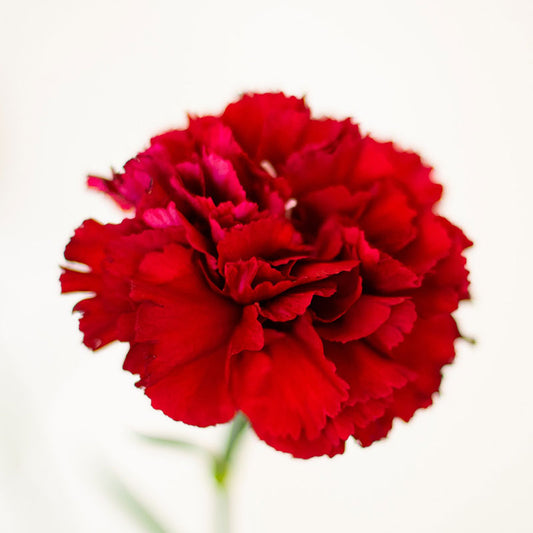
Carnation Seeds - Etincellant
This vermillion carnation defines romance and belongs on a lapelCarnation Seeds - Etincellant
This vermillion carnation defines romance and belongs on a lapelRegular price As Low As $5.99Regular priceUnit price per -
main-collection-product-grid
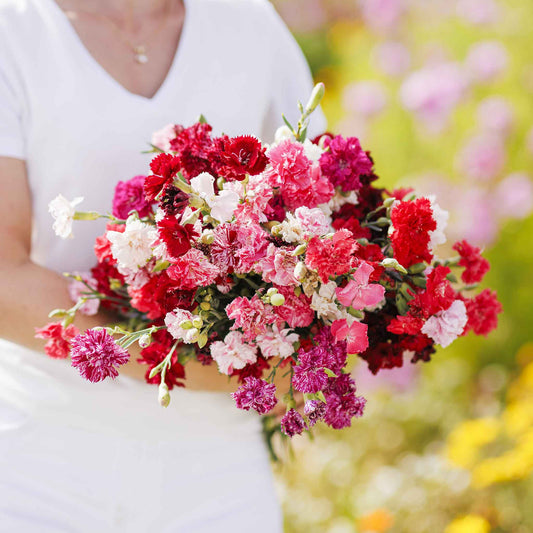
Carnation Seeds - Enfant de Nice Mix
A heirloom mix of fragrant blooms is a garden mainstayCarnation Seeds - Enfant de Nice Mix
A heirloom mix of fragrant blooms is a garden mainstayRegular price As Low As $5.99Regular priceUnit price per -
main-collection-product-grid
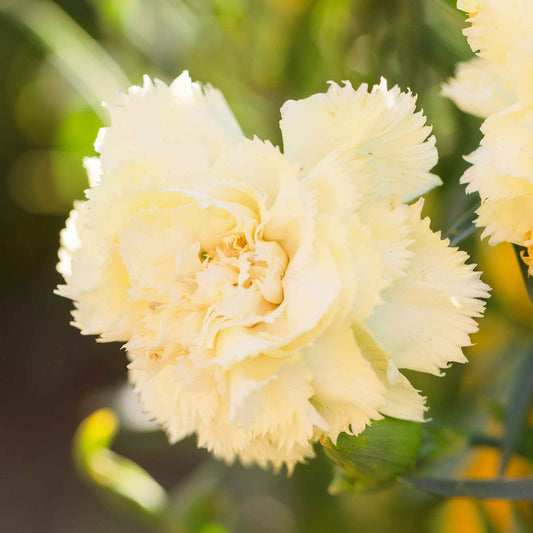
Carnation Seeds - Marie Chabaud
Small lemon-yellow blooms are the first to flower in springCarnation Seeds - Marie Chabaud
Small lemon-yellow blooms are the first to flower in springRegular price As Low As $5.99Regular priceUnit price per -
main-collection-product-grid
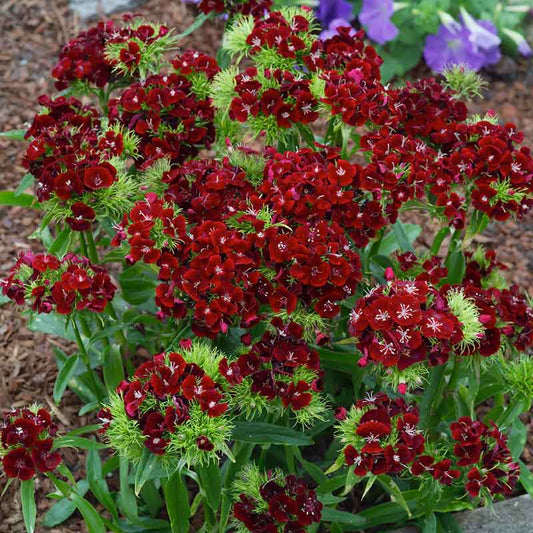
Sweet William Seeds - Dunetti
This crimson heirloom biennial is a coveted cut flowerSweet William Seeds - Dunetti
This crimson heirloom biennial is a coveted cut flowerRegular price As Low As $4.99Regular priceUnit price per -
main-collection-product-grid
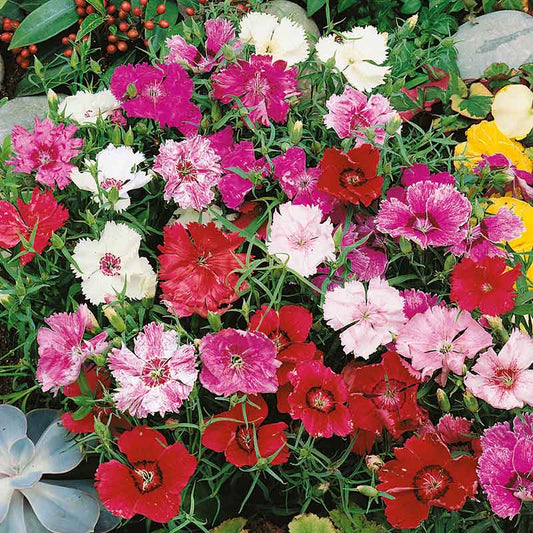
Chinese Pinks Seeds - Babydoll Mix
Heirloom dianthus that thrives in the shade gardenChinese Pinks Seeds - Babydoll Mix
Heirloom dianthus that thrives in the shade gardenRegular price As Low As $4.99Regular priceUnit price per -
main-collection-product-grid
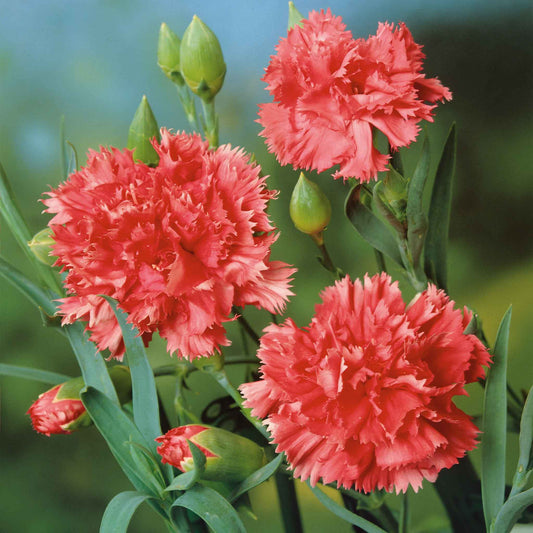
Carnation Seeds - Orange Sherbet
These orange blooms are edible, but they don't taste citrusyCarnation Seeds - Orange Sherbet
These orange blooms are edible, but they don't taste citrusyRegular price As Low As $5.99Regular priceUnit price per -
main-collection-product-grid
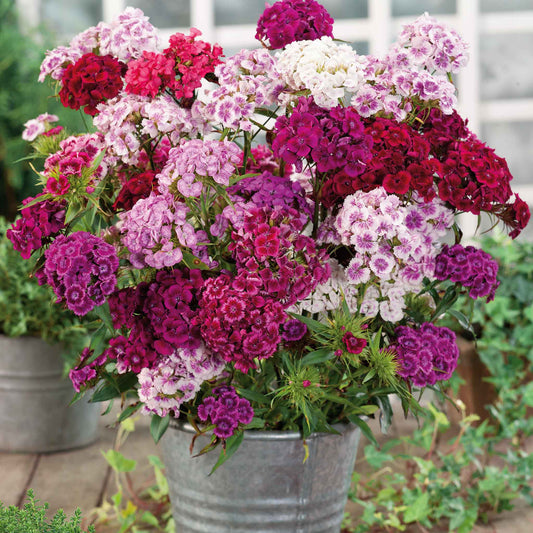
Sweet William Seeds - Herald of Spring Mix
This blend of early bloomers are the first sign of springSweet William Seeds - Herald of Spring Mix
This blend of early bloomers are the first sign of springRegular price As Low As $4.99Regular priceUnit price per
Growing heirloom dianthus in your garden
- 16 heirloom dianthus seed varieties
- Easy to grow with beautiful results
- Comes in a variety of colors and blooms
- Prefers full sun exposure
Grow the best heirloom dianthus flowers
The name Dianthus comes from the Greek language, as do many flower names. The dianthus, which derives its name from the Greek words dios ("of Zeus") and anthos ("flower"), has a lot to live up to. According to legend, the color pink was called after the flower because of its perforated borders. Pinking was first used as a verb in the 14th century to denote decorating with a punched or perforated pattern. It's simple to spot the relationship while looking at the edges of a dianthus. It appears as if nature has decided to cut this species with pinking shears.
Wonderful uses for heirloom dianthus
Many heirloom dianthus species have a delightfully aromatic perfume that only adds to their beauty. The majority are native to Europe and Asia, with a few from North America. There is even one alpine species that is native to North America's arctic regions. Carnations and sweet William are well-known dianthus flowers. They've long been a favored flower for rockeries and cottage gardens. Carnations, in particular, have grown in popularity as a result of their widespread use in cut flower arrangements.
How to plant and tend to heirloom dianthus
Although most dianthus are perennials, some are annual or biennial. The frilled, pinked borders that earned the blooms their name are most commonly pink in color. The planting instructions for the various types of heirloom dianthus may differ, so consult the specific planting guides. However, practically all types prefer to be in full light (at least six hours of sun a day). When planting heirloom dianthus, it's also crucial to consider appropriate air circulation. The soil should be nutrient-rich and well-draining, with two to four inches of compost added to keep it that way. Seeds should be started indoors up to eight weeks before being transplanted outside. After the first hard frost, apply a four-inch layer of mulch for protection during the cold winter months, then remove it once new growth emerges in the spring.
For more information about planting, growing, and caring for heirloom dianthus seeds, see the Dianthus Seeds Planting Guide.















